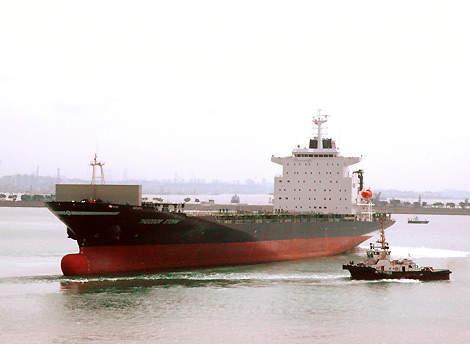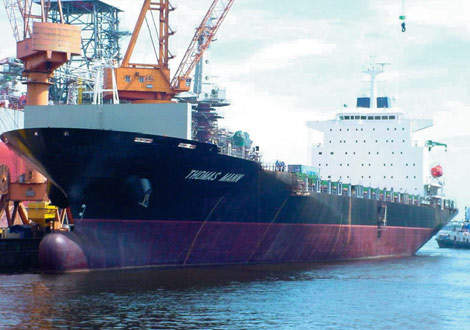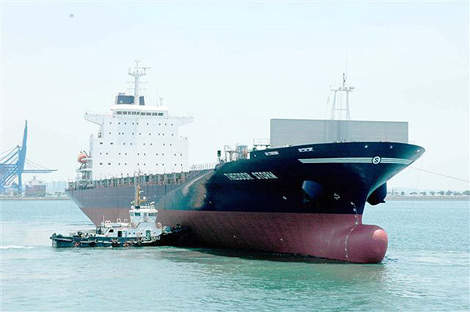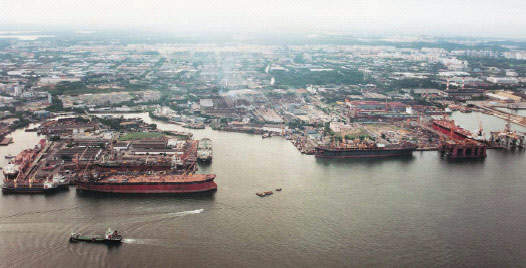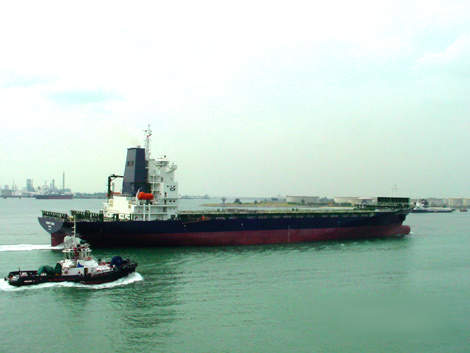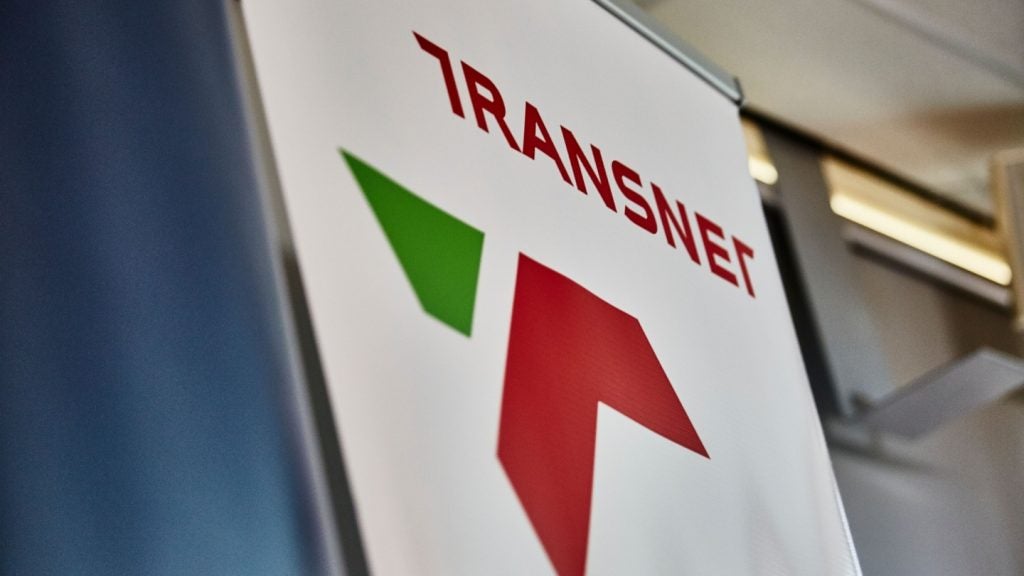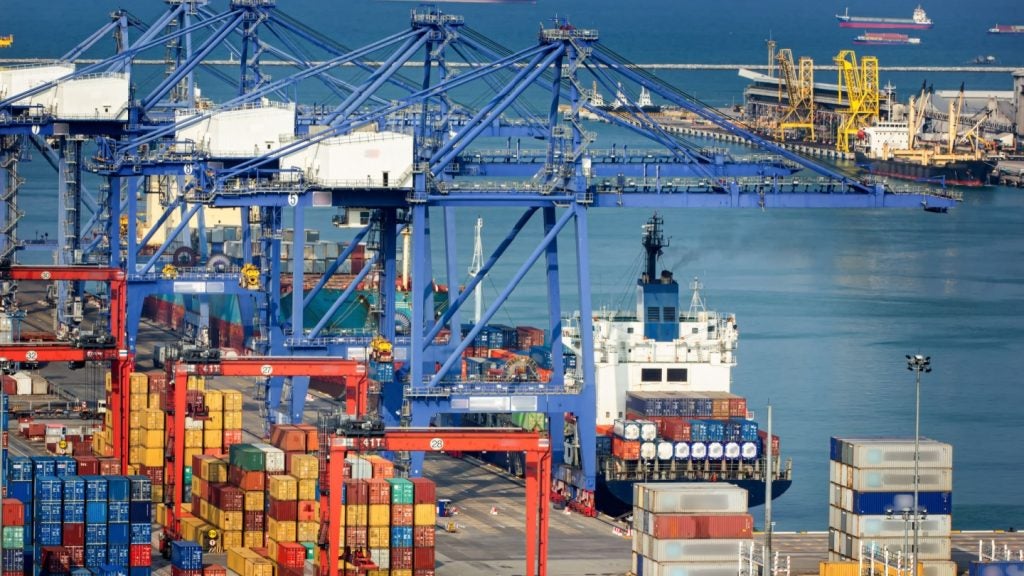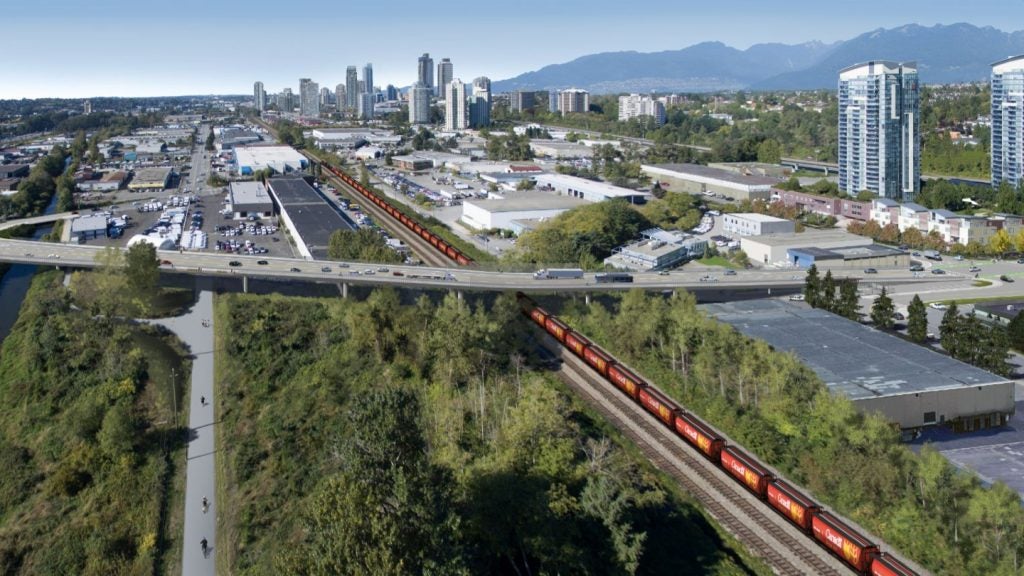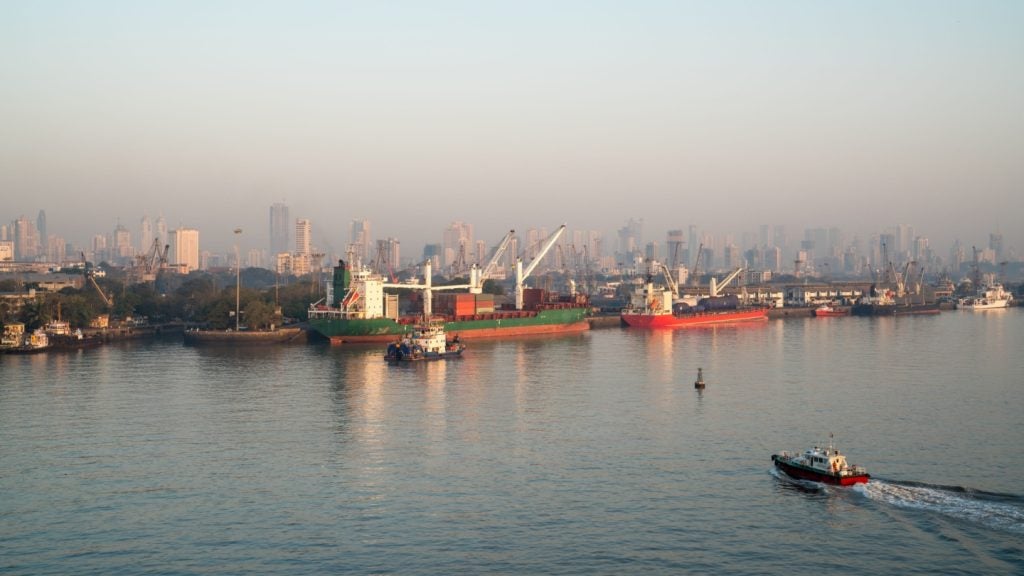The Theodor Storm is the second of a series of container ships, the first of which, the S$55 million Thoman Mann, was launched in November 2003. Owned by Reederei Karl Schluter of Germany, the vessel is a proprietary design of Jurong Shipyard and was built at its Singapore yard.
The vessel has an overall length of 213m or 32.2m between perpendiculars. The depth to the upper deck (moulded) is 16.5m and it has a draught (moulded, scantling) of 11.5m. It registers 28,270t and has a deadweight of approximately 32,600dwt.
The single-decked vessel has an extended forecastle, which contains a breakwater. The machinery and accommodation are arranged aft. The Theodor Storm’s hull is double-skinned, with a 2m gap between the skins at the side and 1.8m at the bottom. Its bunkers contain 3,735m³ of heavy oil and 435m³ of diesel oil. It also contains 10,729m³ of water ballast.
CONTAINER CAPACITY
Containers of 20ft, 40ft and 45ft in length and 8ft 6in and 9ft 6in in height can be accommodated on and in the vessel. The box ship has a total capacity of 2,586 TEU. Up to 1,518 TEU and 55 FEU can be accommodated on the deck while 958 TEU can be accommodated in the holds. There are 400 reefer plugs – 96 in the holds and 304 on deck.
The units are arranged in six tiers of 13 rows on deck as well as six tiers of 11 rows in the hold. Covering the holds are McGregor non-sequential steel pontoon hatch covers. No 1 hatch cover has a load of 60t, while holds No. 2-10 have a stack loading of 70t. The loading is 150t in the holds.
FIRE PREVENTION AND AUXILIARY EQUIPMENT
To prevent fire, the vessel has an Autronica addressable fire detection system. The extinguishing facilities include a Unitor CO2 unit in the holds and a Unitor CO2 hi-fog system in the engine room.
Auxiliary equipment includes a Teamtec GS 500C waste disposal plant and a In-Sink-Erator SS-75 shredder / crusher. There is also a Taiko Kikai sewage plant.
POWER, PROPULSION AND MANOEUVRING
The vessel has a MAN B&W 7K80MC-C main engine with an output of 25,270kW at 104rpm. This is linked to a nickel aluminium bronze propeller manufactured by Zhengjiang marine. The fixed pitch propeller has a diameter of 7,190mm, all of which helps to give the ship it a service speed of 22.7 knots at 90% MCR, or an economical speed of 21.6 knots. The engines consume 98t/day of fuel oil and the auxiliaries, another 5t/day.
Manoeuvring in port is assisted by a Kawasaki bow thruster with an output of 1,200kg, which translates into a thrust of 16t.
Electricity is generated by four diesel driven gensets. These consist of four Wartsila 8L20C engines, each with an output of 1,360kW at 900rpm. Each engine is linked to a Leroy Somer LSA 53 M8 8P alternator with an output of 1,290kW.
Steam generation is carried out by a composite boiler with an output of 2,500kg/hr from the oil fired component and 3,000kg/hr forms the exhaust gas section.
On the bridge, there is a JRC integrated navigation system which can be used in a one-man operation.
The vessel is classified by ABS with the notation +1 (E), container carrier SH, +AMS +ACU.

